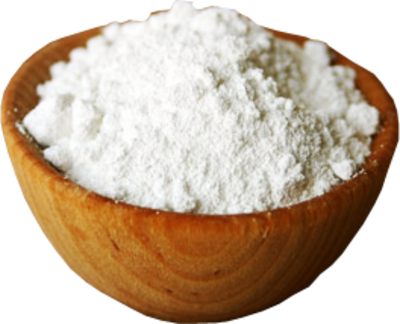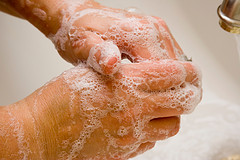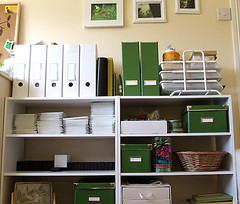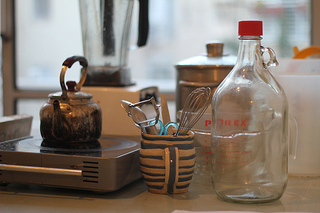The world of green cleaning is filled with benefits, from protecting your family’s health to safeguarding the environment. However, there are still many myths and misconceptions that deter people from making the switch to eco-friendly products. These myths often stem from misunderstandings about how natural cleaners work, their effectiveness, and their cost. Let’s take a closer look at some of the most common green cleaning myths and debunk them with evidence-based information and practical advice.
One of the most pervasive myths about green cleaning is that natural cleaners are less effective than their chemical counterparts. Many people believe that unless a cleaner has a strong, chemical odor, it’s not truly cleaning or disinfecting their surfaces. However, this couldn’t be further from the truth. Many natural ingredients, such as vinegar, baking soda, and lemon, have powerful antibacterial and antifungal properties that can effectively eliminate germs and bacteria. For example, vinegar is acetic acid, which has been proven to kill many strains of bacteria, including E. coli and Salmonella. Baking soda, on the other hand, acts as a mild abrasive, making it excellent for scrubbing away grime and stains. When combined with essential oils, such as tea tree or lavender, these natural cleaners not only disinfect but also leave your home smelling fresh without the use of artificial fragrances.
Another common myth is that green cleaning is more expensive than using traditional chemical cleaners. While it’s true that some store-bought eco-friendly products can be pricier than conventional ones, the reality is that making your own green cleaners at home can be incredibly cost-effective. Many natural cleaning ingredients are items you likely already have in your pantry, such as vinegar, baking soda, and lemon juice. Even when you do purchase these items, they are often much cheaper per use compared to commercial cleaners. A single bottle of vinegar or a box of baking soda can last for months and be used for a wide variety of cleaning tasks around the house. Additionally, by reusing spray bottles and reducing the need for multiple specialized cleaners, you save money in the long run. The perceived costliness of green cleaning often comes from the misconception that eco-friendly products must be store-bought, but DIY solutions are a budget-friendly and effective alternative.
A third myth is that green cleaning products are less convenient to use, requiring more effort and time to achieve the same results as traditional cleaners. This myth often arises from the idea that without harsh chemicals, natural cleaners require more scrubbing or repeated applications. However, this isn’t the case. In many situations, green cleaners can work just as quickly and efficiently as their chemical-laden counterparts. For example, using a mixture of vinegar and water to clean windows or mirrors is just as effective as using a commercial glass cleaner, and it doesn’t leave behind streaks or residue. Similarly, sprinkling baking soda on a carpet before vacuuming can neutralize odors just as effectively as any synthetic carpet freshener. The key to successful green cleaning is understanding how to use these natural ingredients properly, and once you do, you’ll find that they are just as convenient and easy to use.
Another misconception is that green cleaning is only about avoiding chemicals and doesn’t necessarily contribute to a healthier environment. Some skeptics argue that the impact of using green cleaners is negligible in the grand scheme of things. However, this myth overlooks the cumulative effect of millions of households making the switch to eco-friendly products. Traditional cleaning products often contain volatile organic compounds (VOCs), which contribute to indoor air pollution and can cause respiratory issues, headaches, and other health problems. By reducing or eliminating the use of these chemicals, green cleaning contributes to better indoor air quality and reduces the overall demand for harmful substances that can end up in our water systems and soil. Moreover, green cleaning practices often go hand-in-hand with other sustainable habits, such as reducing waste by using reusable cloths instead of disposable paper towels, and choosing products with minimal or recyclable packaging.
Finally, some people believe that green cleaning is only for those who are particularly environmentally conscious or have specific health concerns, like allergies or asthma. This myth creates the false idea that green cleaning is a niche practice, rather than something that can benefit everyone. In reality, switching to green cleaning products is a simple and accessible way for anyone to reduce their exposure to harmful chemicals and contribute to a healthier home and planet. Even if you’re not particularly concerned about the environment, the health benefits of reducing the use of toxic substances in your home are compelling reasons to make the switch. For families with young children, pets, or anyone with respiratory sensitivities, green cleaning can significantly reduce the risk of irritation and long-term health effects.
In conclusion, the myths surrounding green cleaning often stem from misunderstandings or misinformation. By understanding the true effectiveness, affordability, convenience, and benefits of natural cleaners, you can make informed choices that support both your family’s health and the environment. Green cleaning is not just an alternative; it’s a viable, effective, and responsible way to maintain a clean and healthy home. Whether you’re just starting to explore eco-friendly options or you’re looking to deepen your commitment to green living, debunking these myths is an important step towards a cleaner, safer, and more sustainable future!






